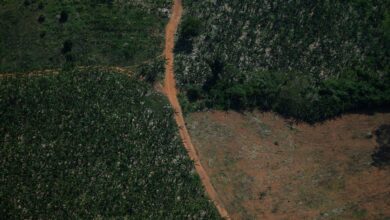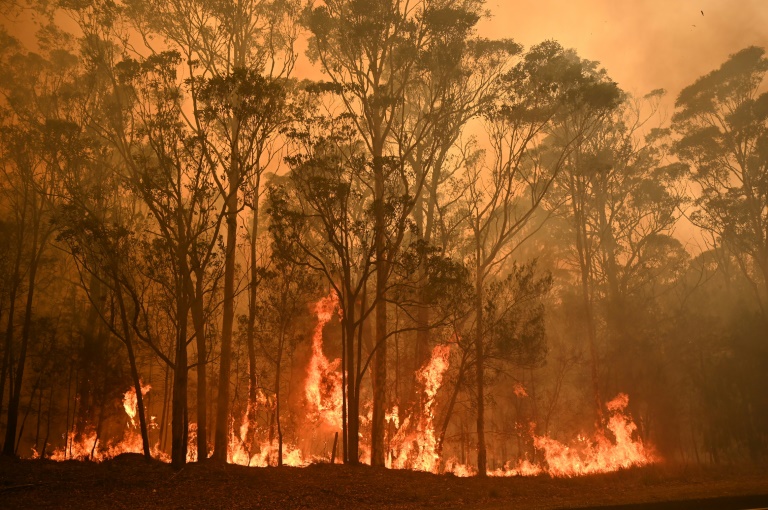Although Wadi el-Rayan is recognised as an important region for migratory and resident birds, is a designated geological and wetlands protectorate, and includes a UNESCO World Heritage Site, it faces a number of internal and external threats including a water shortage.
More than 150km south of Cairo in Fayoum governorate, Wadi el-Rayan is underfunded and understaffed, making the preservation of the 1795km sq area difficult.
Unregulated agriculture outside Wadi el-Rayan's borders has diverted water and harmed nature within it. Meanwhile inside the area itself, regulated petroleum and agricultural activities and unregulated tourism and recreation may also be causing damage.
Designated as a natural protectorate in 1989 by Prime Ministerial Decree 943, Wadi el-Rayan consists of the waterfall and lakes area, the Rayan Springs area, Rayan Mountain, and Wadi el-Hitan (Valley of the Whales). With the exception of the waterfalls and associated lakes, all are natural geological formations dating back tens of millions of years.
The waterfalls and two associated lake areas were created in the early 1970s from a water drainage system originating at the south of Fayoum's gargantuan Lake Qarun. The lakes and waterfalls, along with agricultural projects within Wadi el-Rayan, have been suffering from a relative water shortage since 2004.
According to one of the preserve's environmentalists, who spoke on condition of anonymity as he is not authorized to speak to the media, an increasing number of farms outside the protectorate are consuming the agricultural drainage water that should be channeled into the lakes.
Greenery and wetlands have gradually been shrinking since 2004 when this problem first emerged, the official said, although the protectorate is not yet undergoing desertification. According to the official, "this is a problem beyond the realm of the protectorate and the Egyptian Environmental Affairs Agency (EEAA). This problem is the responsibility of the Ministry of Irrigation."
The media spokesperson for the Ministry of Irrigation declined to respond to questions regarding unregulated agricultural operations near the protectorate.
Within the nature preserve the anonymous official said water consumption by fish farms, agricultural lands and desert-land reclamation projects is regulated by protocols from the EEAA and the Ministry of Agriculture. The official said these projects are subject to feasibility and environmental-impact studies and comply with the environmental standards and regulations of the protected area.
"They are in keeping with the principles of sustainable development," he said.
According to the official, existing farms do not use chemical fertilizers or water-intensive irrigations systems, but drip-irrigation systems. Fish farms, he said, use water flowing between the two lakes, which doesn’t place a burden on water supply.
Local tour operator Walid Fikri, who is based in the area, said the water pressure and volume of the waterfalls has decreased significantly over the past four to five years. "Just four years ago you could hear the roaring and crashing of the water down the falls from over a kilometer away. It’s now just a trickle in comparison to what it used to be." Fikri added, “We’ve been seeing far fewer migratory birds around the lakes over the past four years. I think that’s because there’s less greenery and less water and fish in the lakes these days.”
Wadi el-Rayan protectorate covers 11,434 hectares of lakes, 1,583 hectares of wetlands, and 160,949 hectares of desert lands. Amongst these expanses are around 1,000 feddans of fish farms and 5,000 feddans of agricultural farms (one feddan equals 1.038 acres); there were also ambitious plans–agreed upon by the EEAA and the Ministry of Agriculture–for the reclamation of over 15,000 feddans of desert land for use in agriculture. These plans, however, have been put on hold due to the current scarcity of water in the protectorate.
Other than the agricultural industry, the petroleum industry has also made a move into the protectorate. North of the protectorate, just past its main entrance, are the operations of the Qarun Petroleum Company. Moreover, by virtue of Law 22/2005, the Ministry of Petroleum authorized contracts for the Edison International Company to prospect for petroleum in the oil field north of Wadi el-Rayan.
According to the aforementioned official, "the petroleum operations in the protectorate are located over 10km away from the lakes, and are in keeping with environmental standards agreed upon between the EEAA and the Ministry of Petroleum."
Visitors and tourists have left their impact on some other areas of Wadi el-Rayan. Unregulated recreational activities including picnics, barbecues, and camping often result in waste and garbage being scattered across the area–especially during public holidays and vacations. The problem of waste disposal is compounded by a scarcity of garbage cans.
Cars and off-road vehicles driving off designated tracks have detrimentally affected fragile areas such as Wadi el-Hitan. The Valley of the Whales is a geological formation created over 40 million years ago, which includes fossils of whales' ancestors. An abundant amount of fossils found in this UNESCO World Heritage Site reveal how whales evolved from land mammals.
Wadi el-Rayan is also endowed with a wide variety of plants and wildlife. Some of the animals found there are endangered or nearly extinct, among which are 15 species of mammals (including deer, foxes, wolves), 16 species of reptiles, and over 100 species of resident and migratory birds. All forms of hunting and forestry are prohibited within Wadi el-Rayan, but wildlife is still threatened by human activities and industries in and around the area. Many of these species may be lost forever if the protectorate is not properly protected.




